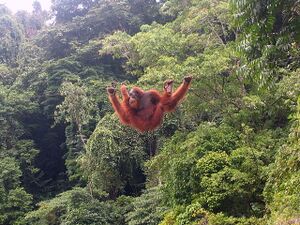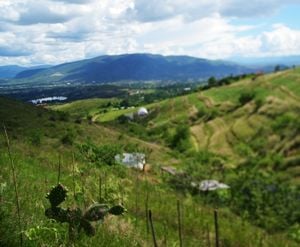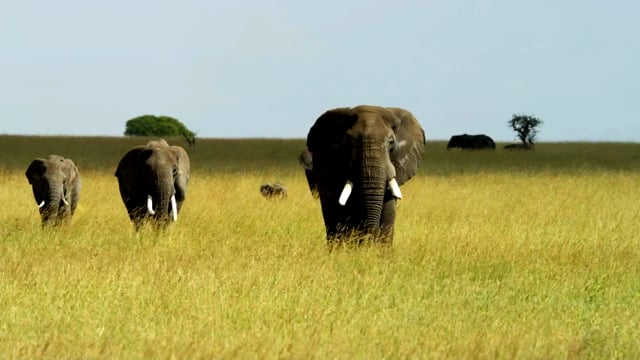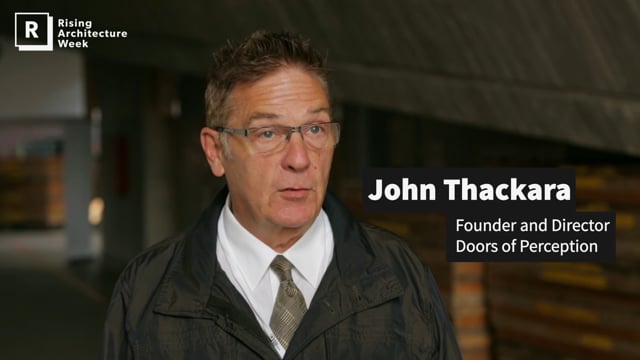
 EU passes law to restore 20% of bloc’s land and sea by end of decade, theguardian.com (Jun 17, 2024)
EU passes law to restore 20% of bloc’s land and sea by end of decade, theguardian.com (Jun 17, 2024)  Herd of 170 bison could help store CO2 equivalent of almost 2m cars, researchers say, theguardian.com (May 15, 2024)
Herd of 170 bison could help store CO2 equivalent of almost 2m cars, researchers say, theguardian.com (May 15, 2024)  Fewer wildfires, great biodiversity: what is the secret to the success of Mexico’s forests?, theguardian.com (May 01, 2024) — More than half of the country’s forestry is in community and Indigenous hands – and from CO2 absorption to reducing poverty the results are impressive
Fewer wildfires, great biodiversity: what is the secret to the success of Mexico’s forests?, theguardian.com (May 01, 2024) — More than half of the country’s forestry is in community and Indigenous hands – and from CO2 absorption to reducing poverty the results are impressive
Biodiversity (or biological diversity) is the variety and variability of life on Earth. It can be measured on various levels. There is for example genetic variability, species diversity, ecosystem diversity and phylogenetic diversity. Diversity is not distributed evenly on Earth. It is greater in the tropics as a result of the warm climate and high primary productivity in the region near the equator. Tropical forest ecosystems cover less than one-fifth of Earth's terrestrial area and contain about 50% of the world's species. There are latitudinal gradients in species diversity for both marine and terrestrial taxa.
Community action projects[edit | edit source]
- promote and encourage Wildlife gardens
- Set up nature trails
- Advocate for and promote the idea of wildlife corridors
- Wildlife surveys, see also: Citizens data initiative
- Ecosytem restoration
- Rewilding
- co-create Nature-based solutions
Events[edit | edit source]
 Mar 03, 2024 (Sun) — World Wildlife Day
Mar 03, 2024 (Sun) — World Wildlife Day Mar 14, 2024 (Thu) — International Day of Action for Rivers, internationalrivers.org
Mar 14, 2024 (Thu) — International Day of Action for Rivers, internationalrivers.org Mar 18, 2024 (Mon) — Global Recycling Day, globalrecyclingday.com
Mar 18, 2024 (Mon) — Global Recycling Day, globalrecyclingday.com Mar 20 - 30, 2024 (Wed - Sat) — Pesticide Action Week
Mar 20 - 30, 2024 (Wed - Sat) — Pesticide Action Week Mar 20, 2024 (Wed) — World Rewilding Day
Mar 20, 2024 (Wed) — World Rewilding Day Apr 22, 2024 (Mon) — Earth Day
Apr 22, 2024 (Mon) — Earth Day May 6 - 12, 2024 (Mon - Sun) — Screen-Free Week
May 6 - 12, 2024 (Mon - Sun) — Screen-Free Week May 11 and Oct 12, 2024 — World Migratory Bird Day, worldmigratorybirdday.org
May 11 and Oct 12, 2024 — World Migratory Bird Day, worldmigratorybirdday.org May 22, 2024 (Wed) — International Day for Biological Diversity
May 22, 2024 (Wed) — International Day for Biological Diversity May 23, 2024 (Thu) — Outdoor Classroom Day
May 23, 2024 (Thu) — Outdoor Classroom Day Jun 05, 2024 (Wed) — World Environment Day
Jun 05, 2024 (Wed) — World Environment Day Jun 08, 2024 (Sat) — World Oceans Day
Jun 08, 2024 (Sat) — World Oceans Day Jun 22, 2024 (Sat) — World Rainforest Day, worldrainforestday.org
Jun 22, 2024 (Sat) — World Rainforest Day, worldrainforestday.org Oct 12, 2024 (Sat) — World Migratory Bird Day, worldmigratorybirdday.org
Oct 12, 2024 (Sat) — World Migratory Bird Day, worldmigratorybirdday.org Nov 07, 2024 (Thu) — Outdoor Classroom Day, celebrating and inspiring outdoor learning and play, outdoorclassroomday.com
Nov 07, 2024 (Thu) — Outdoor Classroom Day, celebrating and inspiring outdoor learning and play, outdoorclassroomday.com Dec 05, 2024 (Thu) — World Soil Day, un.org
Dec 05, 2024 (Thu) — World Soil Day, un.org Dec 11, 2024 (Wed) — International Mountain Day, Dec 11, annually, fao.org
Dec 11, 2024 (Wed) — International Mountain Day, Dec 11, annually, fao.org
2021-2030, UN Decade on Ecosystem Restoration
Ecosystem restoration[edit | edit source]

 How China’s most ‘futuristic’ city restored its mangroves, dialogue.earth (Jul 11, 2024)
How China’s most ‘futuristic’ city restored its mangroves, dialogue.earth (Jul 11, 2024)  Community-led approach to mangrove restoration in southern Thailand based on beekeeping, news.mongabay.com (Jun 18, 2024)
Community-led approach to mangrove restoration in southern Thailand based on beekeeping, news.mongabay.com (Jun 18, 2024)  EU passes law to restore 20% of bloc’s land and sea by end of decade, theguardian.com (Jun 17, 2024)
EU passes law to restore 20% of bloc’s land and sea by end of decade, theguardian.com (Jun 17, 2024)
Ecosystem restoration is the process of halting and overturning degradation, resulting in cleaner air and water, extreme weather mitigation, better human health, and recovered biodiversity, including improved pollination of plants. Restoration encompasses a wide continuum of practices, from reforestation to re-wetting peatlands and coral rehabilitation.[1]
Rewilding[edit | edit source]
Rewilding is a form of ecological restoration aimed at increasing biodiversity and restoring natural processes. It differs from other forms of ecological restoration in that rewilding aspires to reduce human influence on ecosystems. It is also distinct from other forms of restoration in that, while it places emphasis on recovering geographically specific sets of ecological interactions and functions that would have maintained ecosystems prior to human influence, rewilding is open to novel or emerging ecosystems which encompass new species and new interactions.
A key feature of rewilding is its focus on replacing human interventions with natural processes. Rewilding enables the return of intact large mammal assemblages. This implies the natural groupings of large mammal species in an area to promote the restoration of trophic networks. The mechanism of rewilding is a process of rebuilding, to restore natural ecosystems by introducing or re-introducing large mammals to promote resilient, self-regulating, and self-sustaining ecosystems. Rewilding projects are usually part of programs for habitat restoration and conservation biology, and ideally they should be based on sound ecological theory and evidence.
While rewilding initiatives can be controversial, the United Nations has listed rewilding as one of several methods needed to achieve massive scale restoration of natural ecosystems, which they say must be accomplished by 2030 as part of the 30x30 campaign.
Wildlife garden[edit | edit source]
A wildlife garden (or habitat garden or backyard restoration) is an environment created with the purpose to serve as a sustainable haven for surrounding wildlife. Wildlife gardens contain a variety of habitats that cater to native and local plants, birds, amphibians, reptiles, insects, mammals and so on, and are meant to sustain locally native flora and fauna. Other names this type of gardening goes by can vary, prominent ones being habitat, ecology, and conservation gardening.
Both public and private gardens can be specifically transformed to attract the native wildlife, and in doing so, provide a natural array of support through available shelter and sustenance. This method of gardening can be a form of restoration in private gardens as much as those in public, as they contribute to connectivity due to the variability of their scattered locations, as well as an increased habitat availability.
Establishing a garden that emulates the environment before the residence was built and/or renders the garden similar to intact wild areas nearby (rewilding) will allow natural systems to interact and establish an equilibrium, ultimately minimizing the need for gardener maintenance and intervention. Wildlife gardens can also play an essential role in biological pest control, and also promote biodiversity, native plantings, and generally benefit the wider environment. Some environmental benefits include the reduction in pest populations through the natural mechanism of biological pest control, by helping reduce the need for pesticides. Habitat gardens also provide the environment an ecosystem service by recharging aquifers by intercepting rainfall.
Wildlife corridor[edit | edit source]
A wildlife corridor, habitat corridor, or green corridor is an area of habitat connecting wildlife populations separated by human activities or structures (such as development, roads, or land clearings), allowing the movement of individuals between populations, that may help prevent negative effects of inbreeding and reduced genetic diversity (via genetic drift) that can occur within isolated populations. Corridors also help facilitate the re-establishment of populations that have been reduced or eliminated due to random events (such as fires or disease) and may moderate some of the worst effects of habitat fragmentation, through urbanization that splits up habitat areas, causing animals to lose both their natural habitat and the ability to move between regions to access resources. Habitat fragmentation due to human development is an ever-increasing threat to biodiversity, and habitat corridors serve to manage its effects.
Resources[edit | edit source]
Visions[edit | edit source]
- Our Goals for 2030, nature.org, (The Nature Conservancy)
Organisations working with communities[edit | edit source]
The Nature Conservancy (TNC) is a global environmental organization headquartered in Arlington, Virginia. As of 2021, it works via affiliates or branches in 79 countries and territories, as well as across every state in the US.
Founded in 1951, The Nature Conservancy has over one million members globally as of 2021 and has protected more than 119,000,000 acres (48,000,000 ha) of land in its history. As of 2014, it is the largest environmental non-profit organization by assets and revenue in the Americas.
- The Nature Conservancy, Video cahnnel on youtube.com, Newsroom, nature.org, added 16:02, 12 December 2023 (UTC)
Citizens data initiative[edit | edit source]
Summary data from Our World in Data[edit | edit source]
- Life on earth is dominated by plants – they make up 82% of global biomass.
- The animal kingdom makes up just 0.4% of global biomass.
- Humans account for just 0.01% of biomass. However, our livestock outweighs wild mammals and birds ten-fold.
- 86% of life is in terrestrial environments; 13% in the deep subsurface; and just 1% in marine environments.
- The tropics are home to the most diverse and unique ecosystems. They tend to have the most endemic species.[2]
Other data[edit | edit source]
- More than 1,200 species of bats comprise nearly a quarter of all mammals, and their ecological services are essential to human economies and the health of whole ecosystems worldwide. Source: unep.org, 21 January 2011
- In Asia, more than 70 percent of primates are classified on the IUCN Red List as Vulnerable, Endangered or Critically Endangered – meaning they could disappear forever in the near future. Source: IUCN, August 2008
- The great apes are the closest living relatives to man, bonobos sharing 98.4 per cent of our DNA, gorillas 97.7 per cent and orang-utans 96.4 per cent. Source: Defra
Inspiration[edit | edit source]
- Surf's up, dolphin dudes! guardian.co.uk
Maps[edit | edit source]
Quotes[edit | edit source]
"We are not defending nature, we are nature defending itself" Resistencia Indigena[3]
"I believe in God, only I spell it Nature." Frank Lloyd Wright
"If you hurt nature you are hurting yourself" ~ J Krishnamurti
Video[edit | edit source]
Nature needs half[edit | edit source]
The WILD Foundation is a 501(c)(3) organization that was founded in 1974 by two South Africans and based in Boulder, Colorado.
The WILD Foundation was founded in 1974 by South African game ranger Ian Player and his Zulu mentor Magqubu Ntombela. One of their most notable conservation efforts prior to forming the WILD Foundation was called "Operation Rhino", the apartheid government's attempt to save the white rhinoceros from extinction in the 1960s. Recent escalations in poaching in the 2010s have brought rhinoceros preservation back to the forefront of WILD's efforts.
After leaving the government wildlife service, Player founded the Wilderness Leadership School, taking people on five-day hikes in the African wilderness. The school started during apartheid and was the first organization in Africa giving its participants a thorough wilderness experience regardless of race.
In 1974, the ideas of conservation that inspired the Wilderness Leadership School expanded into the concept that became the WILD Foundation and WILD's sister organizations in the Wilderness Network. Laurens van der Post worked closely with Player in the early days of WILD and was a founding member of the board of directors, serving until 1987. Originally named the International Wilderness Leadership Foundation, the organization began doing business as the WILD Foundation in 1988. WILD has been a member of the World Commission on Protected Areas (International Union for Conservation of Nature) since 1988, and founder/co-chair of the IUCN Wilderness Specialist Group.
Since its founding, the WILD Foundation has worked on scores of field projects in dozens of countries. In 1983, the WILD Foundation established the World Wilderness Congress. The WILD Foundation has helped foster organizations, such as the Cheetah Conservation Fund based in Namibia, National Geographic photographer James Balog's Extreme Ice Survey, and the International League of Conservation Photographers, a consortium of the world's top photographers dedicated to "furthering environmental and cultural conservation through ethical photography".
For six years until about 2010, WILD and iLCP partnered with the cement company Cemex to produce a book series about such topics as biodiversity, the human footprint, transboundary conservation and climate change. Starting in the 1990s CEMEX and local Mexican NGOs worked to realize CEMEX's conservation projects in the Maderas del Carmen region in northern Mexico. The Maderas del Carmen was the first legally designated wilderness area in Latin America. This work led to the establishment of an "Area of Bi-National Environmental Interest" straddling 10 million acres of Texas/Mexico border. This area was supported by presidents Barack Obama and Felipe Calderón and signed into law in November 2011.
The World Wilderness Congress is an environmental forum first convened in South Africa in 1977. The congress has become WILD's flagship program and has convened nine times on five continents, drawing thousands of people from around the world. World leaders, such as Mexico's President Felipe Calderón (2009), Norway's Prime Minister Gro Harlem Brundtland (1987), Australia's Prime Minister Malcolm Fraser (1980); notable people such as Jane Goodall and Sylvia Earle, Iain Douglas-Hamilton, Thor Heyerdahl, Wangari Maathai, Mario Molina; tribal and community leaders such as Tashka Yawanawa, Oren Lyons, Maqgubu Ntombela; the heads of major international corporations; and hundreds of conservationists have participated in the congress.
At the 9th World Wilderness Congress in Mérida, Mexico, WILD, with the collaboration of a spectrum of international organizations, governments and individuals, introduced Nature Needs Half, which aspires that humans give up use of half of land and water on Earth, in order to support wilderness. Marine biologist Sylvia Earle and Jane Goodall have endorsed Nature Needs Half, with Earle's only criticism being that she "hoped that half would be enough". Since its inception, WILD has begun collecting and conducting case studies of places around the world that have, or are on track to achieve, at least half protection.
The WILD Foundation is a founding member of Wilderness Foundation Global, a consortium of independent, like-minded organizations consisting of WILD Foundation (US), The Wilderness Foundation (SA), The Wilderness Foundation (UK) and the Wilderness Leadership School (SA). Wilderness Foundation Global works worldwide to:
- Protect and sustain wilderness, wildlife, and human communities.
- Promote the values and services provide by wildlands and seas.
- Provide wilderness-related information, education, experience, and training.
- International Journal of Wilderness ISSN 1086-5519
- Wilderness Management ISBN 1-55591-855-7
- Zulu Wilderness: Shadow and Soul, Ian Player ISBN 1-55591-363-6
- When Elephants Fly, Carol Batrus ISBN 978-1-55591-565-0
- Una Introducción al Derecho y las Políticas Internacionales Sobre Áreas Silvestres, Kormos
- International Handbook on Wilderness Law and Policy, Cyril Kormos, ISBN 978-1-55591-680-0
- Wilderness (published in Spanish as Tierras Silvestres) ,Vance Martin (images by Patricio Robles Gil) ISBN 978-607-00-1522-9.
- Official website
Biodiversity in agriculture[edit | edit source]
Biodiversity in agriculture is the measure of biodiversity found on agricultural land. Biodiversity is the total diversity of species present in an area at all levels of biological organization. It is characterized by heterogeneous habitats that support the diverse ecological structure. In agricultural areas, biodiversity decreases as varying landscapes are lost and native plants are replaced with cultivated crops. Increasing biodiversity in agriculture can increase the sustainability of farms through the restoration of ecosystem services that aid in regulating agricultural lands. Biodiversity in agriculture can be increased through the process of agroecological restoration, as farm biodiversity is an aspect of agroecology.
Biodiversity is the measure of biotic and abiotic diversity in an ecosystem, described by heterogeneity. The loss of biodiversity in agriculture has been an increasing issue since the global increase of food demands and success of popular crops. This loss of heterogeneity declines species biodiversity on agricultural lands. Biodiversity in agriculture is essential in providing ecosystem services, which conserves biodiversity while providing agricultural services.
Cities and biodiversity[edit | edit source]
Cities and Biodiversity Outlook
Campaigns[edit | edit source]
- Nature Positive, Global Goal for Nature: Nature Positive by 2030. "We need to halt and reverse nature loss measured from a baseline of 2020, through increasing the health, abundance, diversity and resilience of species, populations and ecosystems so that by 2030 nature is visibly and measurably on the path of recovery."
- No to Biodiversity Offsetting!
See also[edit | edit source]
- Biodiversity UK
- Biodiversity news
- Biological diversity
- Natural climate solutions
- Ethical consumerism
- Extinction Rebellion
- Food, sustainable community action
- Open spaces
- Trees, woodland and forest
- local information can be found, or shared, via our many location pages
External links
- Wikipedia: Biodiversity, Biocultural diversity, Biosphere reserve, Convention on Biological Diversity, Endangered species, Great Apes Survival Partnership, IUCN Red List, Orangutan, Tiger, World Land Trust
- Ape Alliance
- Biocultural Heritage, site dedicated to promoting the interlinked biological and cultural riches of indigenous peoples and local communities
- Biodiversity Media Alliance
- the Gorilla Organization
- Intergovernmental Platform on Biodiversity and Ecosystem Services
- International Animal Rescue, animal welfare non-profit organization based in the United Kingdom that comes to the aid of wild and domestic animals with hands-on rescue and rehabilitation. International Animal Rescue returns rehabilitated animals to the wild while also providing permanent sanctuary for those that cannot be released. International Animal Rescue specializes in comprehensive sterilization and vaccination programs for stray dogs and cats, particularly in developing countries. They also work to educate the public in the humane treatment of all animals. International Animal Rescue has offices in the United Kingdom, United States, India, Indonesia, Malta and the Netherlands.[4]
- International Fund for Animal Welfare
- IUCN Red List of threatened species
- Open Source Beehives, global network of citizen scientists aiming to discover the reason bee populations are declining throughout the world
- Orangutan Land Trust, UK charity with the objective of providing sustainable solutions for the long-term survival of the orangutan in the wild by ensuring safe areas of forest for their continued existence. The organizations President and co-founder, Lone Drøscher Nielsen is a prominent wildlife conservationist. W
References







